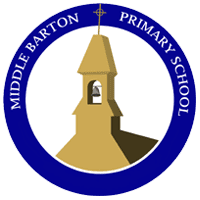Geography
| Intent | Our aim is for children to understand and gain an appreciation towards their place within the world today and other cultures and societies. They will do this by exploring and investigating how societies change and adapt over time including what impact human influences have on the environment. Children will have knowledge about their immediate environment in Year 1 and then progress further across the world as they move through to Year 6. They will be able to name the seas, continents and key landmarks and they will contrast and compare using prior facts from previous years. Children will identify the human and physical features that build up our world and recognise similarities and differences between countries. |
| Implementation |
From year 1-6, lessons are delivered using prior learning, revists and new learning. Prior learning: to check that children have embedded knowledge from the previous learning, often from a previous year. Revisits: recapping knowledge and skills, and addressing misconceptions from recent lessons within the current block. New learning: introducing new concepts, skills and knowledge.
Geography is structured by teaching in order of distance. In both key stages, the children begin their learning with their local area and progress throughout the years to look at various areas that are further and further afield. By the end of the key stages, children have learned about the places furthest away to them in the world. Children will also look at key human and physical features and learn relative vocabulary within looking at particular areas of the world.
All classes will have up-to-date working walls which will scaffold children’s learning,provide children with vocabulary and model examples of work being taught. Each class will also have accessible resources such as a globe, world map and atlases to consistently aid towards children’s understanding.
There are opportunities to do fieldwork during studies on the local area in both key stages. There are also many chances throughout each topic for children to develop vital skills such as map reading, navigation skills and using globes, atlases or compasses.
In every year group, geography is taught for half of a term alternating with history. Children will receive one geography lesson each week during that half of the term lasting for at least one hour. |
| Impact |
Pupil voice allows us to see that children have enjoyed and embedded learning and are confident to talk about what they have learned using subject specific vocabulary.
Teachers will further assess understanding through independent work in books and through the end of unit assessment.
End of unit assessments are based on the children’s understanding of 3 key points that have been taught throughout the topic. |
History
|
Intent |
By making connections in history, children will understand their place within the world today. They will explore and investigate how societies change and adapt over time including any human influences on the environment. They will learn to make decisions and judgements on Global issues both today and in the past. Through using a clearly mapped chronology from Year 1 to Year 6, children will be able to apply knowledge from previous periods in history and look for patterns and similarities. They will be able to place different time periods sequentially and develop a conceptual understanding of how our world has evolved over time. |
|
Implementation |
History is structured by teaching in chronological order. In Key Stage One, children begin their learning by looking at changes within living memory and progress backwards through time studying significant events and people that took place and lived. In Key Stage Two, children begin their learning with civilisations and time periods that lived furthest away from today and progress forwards through time to study significant events in history closer to time today. From year 1-6, lessons are delivered using prior learning, revists and new learning. Prior learning: to check that children have embedded knowledge from the previous learning, often from a previous year. Revisits: recapping knowledge and skills, and addressing misconceptions from recent lessons within the current block. New learning: introducing new concepts, skills and knowledge. All classes will have up-to-date working walls which will scaffold children’s learning, provide children with relevant vocabulary and model examples of work being taught. Children will be able to name and locate significant events and civilisations from prior learning which will be scaffolded through individual class timelines that will pinpoint key times from the children’s current academic year and previous studies. Where possible, children will be given experiences within and out of the classroom to create memorable learning experiences and a rounded understanding. Each class will have relevant and accessible resources where appropriate. In every year group, history is taught for half of a term alternating with geography. Children will receive one history lesson each week during that half of the term lasting for at least one hour. |
|
Impact |
Pupil voice allows us to see that children have enjoyed and embedded learning and are confident to talk about what they have learned using subject specific vocabulary. Teachers will further assess understanding through independent work in books and through the end of unit assessment. End of unit assessments are based on the children’s understanding of 3 key points that have been taught throughout the topic. |
Useful Information
Please click to access or download the useful documents below:
DFE History National Curriculum
DFE Geography National Curriculum


